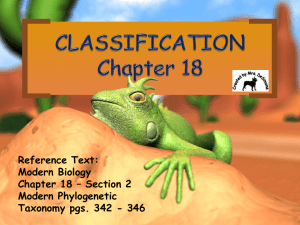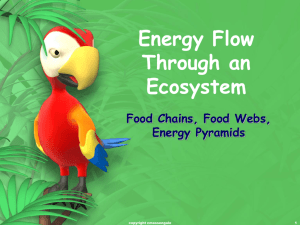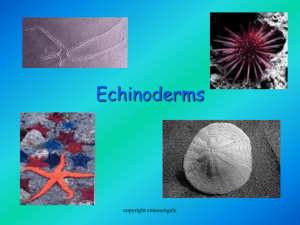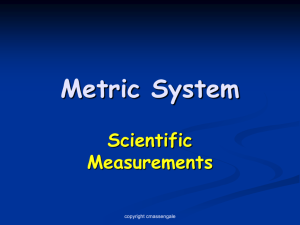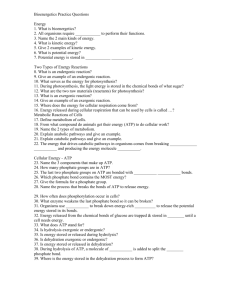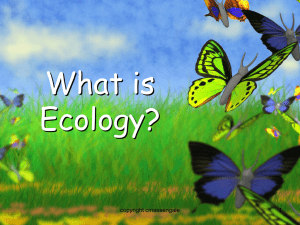Bioenergetics - Biology Junction
advertisement
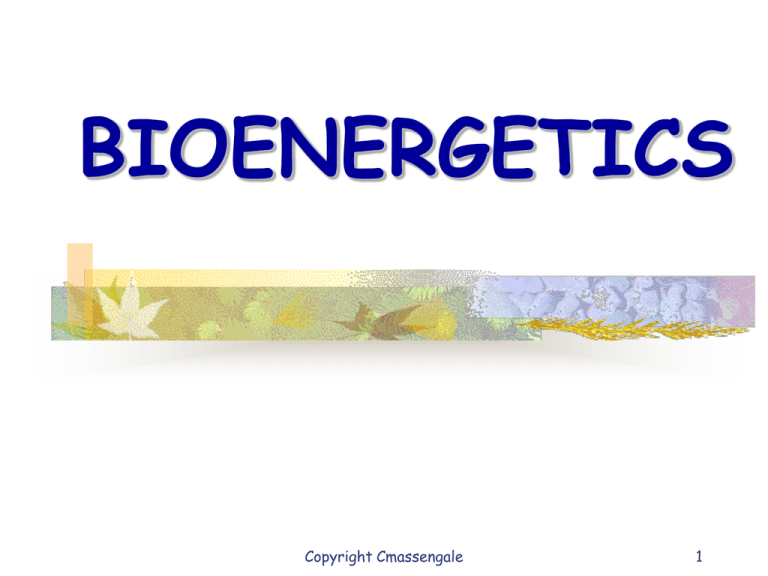
BIOENERGETICS Copyright Cmassengale 1 What is Bioenergetics? The study of energy in living systems (environments) and the organisms (plants and animals) that utilize them Copyright Cmassengale 2 Energy Required by all organisms May be Kinetic or Potential energy Copyright Cmassengale 3 Kinetic Energy Energy of Motion Heat and light energy are examples Copyright Cmassengale 4 Potential Energy Energy of position Includes energy stored in chemical bonds Copyright Cmassengale 5 Two Types of Energy Reactions Copyright Cmassengale 6 Endergonic Reactions Chemical reaction that requires a net input of energy. Photosynthesis SUN photons Light Energy 6CO2 + 6H2O C6H12O6 + 6O2 (glucose) Copyright Cmassengale 7 Exergonic Reactions Chemical reactions that releases energy Cellular Respiration Energy C6H12O6 + 6O2 6CO2 + 6H2O+ ATP (glucose) Copyright Cmassengale 8 Metabolic Reactions of Cells Copyright Cmassengale 9 What is Metabolism? The sum total of the chemical activities of all cells. Copyright Cmassengale 10 Two Types of Metabolism Anabolic Pathways Catabolic Pathways Copyright Cmassengale 11 Anabolic Pathway Metabolic reactions, which consume energy (endergonic), to build complicated molecules from simpler compounds. light SUN energy Photosynthesis 6CO2 + 6H2O C6H12O6 + 6O2 (glucose) Copyright Cmassengale 12 Catabolic Pathway Metabolic reactions which release energy (exergonic) by breaking down complex molecules in simpler compounds energy Cellular Respiration C6H12O6 + 6O2 6CO2 + 6H2O + ATP (glucose) Copyright Cmassengale 13 Cellular Energy ATP Copyright Cmassengale 14 ATP Components: 1. adenine: nitrogenous base 2. ribose: five carbon sugar 3.phosphate group: chain of 3 adenine phosphate group P P P ribose Copyright Cmassengale 15 Adenosine Triphosphate Three phosphate groups-(two with high energy bonds Last phosphate group (PO4) contains the MOST energy Copyright Cmassengale 16 Breaking the Bonds of ATP Process is called phosphorylation Occurs continually in cells Enzyme ATP-ase can weaken & break last PO4 bond releasing energy & free PO4 Copyright Cmassengale 17 How does ATP work ? Organisms use enzymes to break down energy-rich glucose to release its potential energy This energy is trapped and stored in the form of adenosine triphosphate(ATP) Copyright Cmassengale 18 How Much ATP Do Cells Use? It is estimated that each cell will generate and consume approximately 10,000,000 molecules of ATP per second Copyright Cmassengale 19 Coupled Reaction - ATP The exergonic hydrolysis of ATP is coupled with the endergonic dehydration H2O process by transferring a phosphate group to another H 2O molecule. Copyright Cmassengale 20 Hydrolysis of ATP ATP + H2O ADP + P (exergonic) Adenosine triphosphate (ATP) P P P Hydrolysis (add water) P P + P Adenosine diphosphate (ADP) 21 Copyright Cmassengale Hyrolysis is Exergonic Energy Used by Cells Copyright Cmassengale 22 Dehydration of ATP ADP + P (endergonic) ATP + H2O Dehydration (Remove H2O P P + P Adenosine diphosphate (ADP) Adenosine triphosphate (ATP) P Copyright Cmassengale P P 23 Dehydration is Endergonic Energy is restored in Chemical Bonds Copyright Cmassengale 24 Review Copyright Cmassengale 25 How many high energy phosphate bonds does ATP have? Copyright Cmassengale 26 Which is true of photosyntheis? Anabolic or Catabolic Exergonic Or Endergonic Copyright Cmassengale 27 The breakdown of ATP is due to: Dehydration or Hydrolysis H2O added or H2O removed Copyright Cmassengale 28 Which Reactions are often Coupled in Organisms Hydrolysis Anabolism Endergonic or BOTH Dehydration or Catabolism or Exergonic BOTH BOTH Copyright Cmassengale 29 Ready for the test? If not, review and try again!!! Copyright Cmassengale 30
